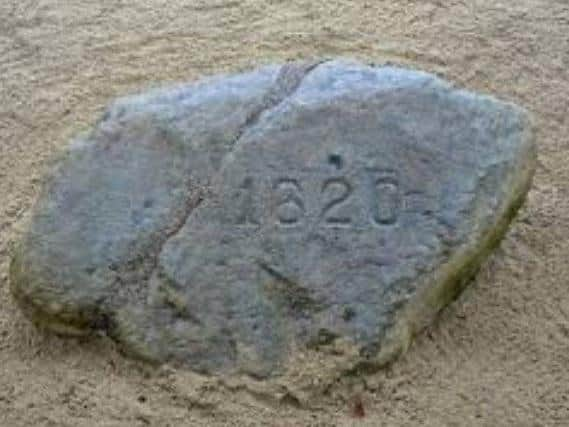The religious Northamptonshire rebel who has a place in history


Four hundred years ago this month, a group of English Puritan Separatists sailed across the Atlantic on a 66-day treacherous journey to the New World. And, tradition says, they set foot on the Plimoth Rock.
That journey was inspired by Robert Browne, a relation of Robert Cecil, treasurer to Queen Elizabeth I, who lived, worked and died in Northamptonshire.
Advertisement
Hide AdAdvertisement
Hide AdHe despised the system of parishes in the established church and thought every church congregation should be entirely independent and self-governing. Naturally, this did not go down well with the ‘powers that be’.
Is it any wonder Good Queen Bess called him ‘Troublechurch Browne’?
While he was at Cambridge University, he preached violent sermons inciting people to break away from the Church of England.
His first congregation of like-minded people was in 1580, but he and his groupies (known as Brownists or Separatists) were hounded out and settled in Holland for safety.
Advertisement
Hide AdAdvertisement
Hide AdThreatened in England by the penalty of death for holding such views, it was in Holland that Browne formulated his views and published some tracts, and this was the birth of what we now know as Congregationalism.
Browne left Holland and after a spell in jail for his beliefs, he came to Northampton where his preaching so upset the Bishop of Peterborough that he was excommunicated.
Then, wonder of wonders, he rejected all the strong views that he had held so dear, and got himself ordained and became Rector of Thorpe Achurch, near Oundle, where he stayed for 40 years, living in magnificent Lilford Hall.
He still managed to preach his unconventional views, but not from the pulpit!
Advertisement
Hide AdAdvertisement
Hide AdSadly, when he was in his 80s, he lost his temper, hit a local constable and old Browne was committed to Northampton gaol, where he died in 1633.
He was buried in St Giles’ Churchyard where his huge monument stands by the south door.
The journey of the Pilgrim Fathers to the New World was a direct result of Browne’s preaching. They founded a community in Plimoth, although Browne never set foot in America.
One of his devoted followers was Thomas Rogers. He was born in Watford, near Daventry, in 1571, where he was baptised and married in the parish church of St Peter & St Paul, as were many of his family before and after him.
Advertisement
Hide AdAdvertisement
Hide AdHe married Alice Cosford in Watford in 1597. They settled in the village and had four children, Joseph, John, Elizabeth and Margaret.
In 1613, the Rogers family, with other Separatists, joined Robert Browne in Leiden in Holland where Thomas worked selling fine cloth.
Thomas, with his eldest son, Joseph, sailed on the Mayflower, leaving Alice and his other children in Leiden, although his second son, John, later sailed to America in 1630.
Tragically, Thomas died in that first winter of 1620/21.
Joseph survived to live a long life as an important member of the new Plimoth Colony. He lived for some time with Governor Bradford and was instrumental in founding the settlements that became Bridgewater and Eastham.
So, more strong connections between Northamptonshire and young
America.